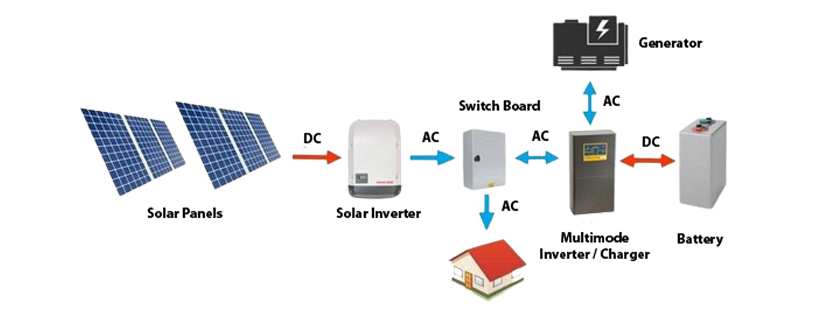 Off-Grid Systems
Off-Grid Systems
The off-grid system also known as a standalone PV system proves to be a good alternative for remote places where access to the utility grid is a costly or impractical task. As this system is not connected to the grid, battery plays an important role in energy storage. The solar panel, battery and inverter forms the basis of an off-grid solar system.
Off-grid solar PV systems work on the basic photovoltaic principle, when solar radiations are incident on the solar panel it generates energy in the form of direct current(DC). The generated DC energy is fed to the charge controller which regulates the flow of charge and supplies the regulated power to the battery. To supply power during the night or on non-sunny days, batteries play an important role.
On a sunny day when the solar panel operates efficiently and produces enough power to cater for the load and also to charge the battery, excess energy is stored in the battery and is retrieved later when required. The DC energy from a solar panel or battery is converted into alternating current(AC) energy (as most of the appliances at residential/commercial buildings run on AC supply) with the help of an inverter. This converted AC energy is supplied to the loads connected with the help of the wiring connection.
The DC power generated from the solar panel or battery is supplied to the inverter, the inverter consists of a capacitor and inductor circuit that opposes the sudden change in its direction and the current begins to rise and fall thus generating the sinusoidal waveform. The generated waveform is either a pure or modified waveform.
With the basic conversion function, the inverter also functions as a monitoring device, it is used to record and store the solar PV system data. The advanced inverter is equipped with a maximum power point function to ensure optimum tracking of solar radiation.